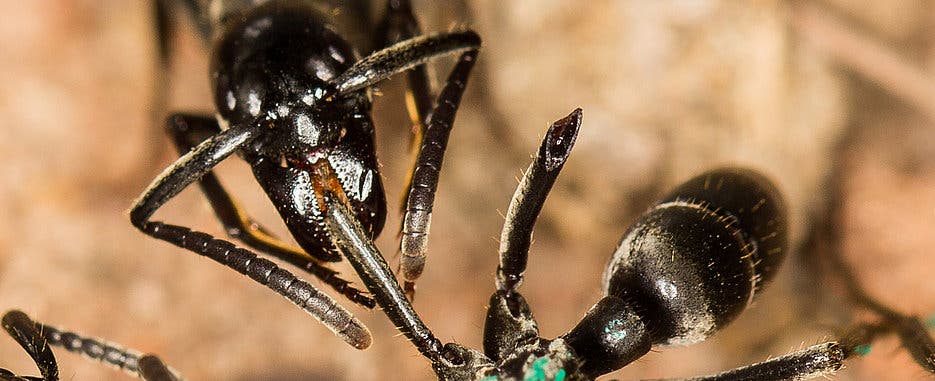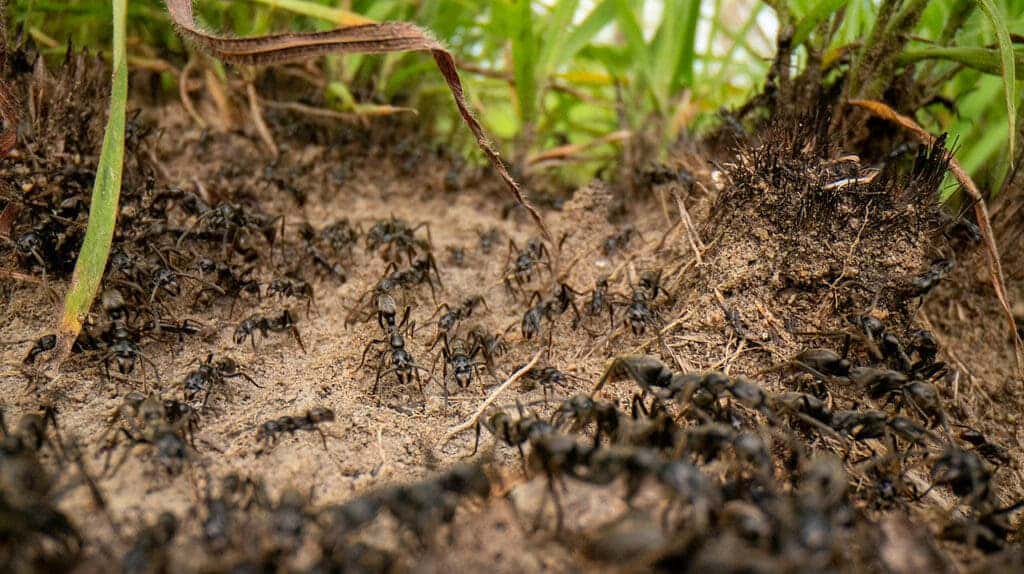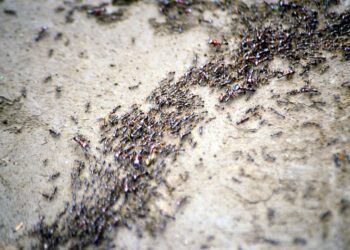Ants are social creatures, and it makes sense that they would look after one another. But the extent to which they do this and the medical sophistication they show surprised researchers.

When African Matabele ants (Megaponera analis) go hunting for termites, it’s a pretty gruesome affair. They invade a termite colony, neutralize the soldiers, and then kill the workers — stealing the eggs and nymphs as food. But the termites can fight back and injure or even kill the ants. But the Matabele ants aren’t just excellent soldiers, they’re also great doctors.
Erik Frank, now fresh out of a postdoc program, has been on the trail of these insects since his master’s degree. At some point, he noticed that sometimes, when an ant would get injured, another ant would start licking the wound. He started suspecting that this was done to prevent infections, and maybe even involved an antimicrobial substance being used. So he started following such interactions more closely.
He found that ants don’t really give up on their wounded. Instead, when an ant gets wounded (and the wound is not too severe), the injured ant remains calm and secretes pheromones to let its mates know. But when an ant is severely wounded, it starts to move frantically around. Essentially, the ant signals its situation for a diagnosis.
It gets even better: the wounded ants are transported back to a nursery in the nest where their infected wounds are treated.
“What we are dealing with here is a complex system of diagnosis and correspondingly adapted treatment,” explains Frank.
This process of diagnosing and then applying treatment has never been discovered in a non-human species before. It’s a complex process that involves diagnosing infections, deciding on a treatment, and then administering the treatment. The Matabele ants may not be the good guy of the story, but they’re certainly resourceful.
“We found out that injured ants communicate when a wound is infected,” explains the biologist. “In the applied substances, we found over a hundred chemical components and 41 proteins. Of about half of them, we can already prove that they have antimicrobial qualities,” he continues.

The ants apparently produce the disinfectants in a gland in their thorax. This location enables the ants to pick up the wounded in their mouth and suck up the substance (either from itself, with its legs, or even from the injured comrade) and apply it to the injury
Frank now wants to look at another type of ant, the Eciton driver ant, which is found in Central and South America, and see if it exhibits similar behavior. This type of ant has also been observed to treat its wounded, but because its raids last so long (12-14 hours), they treat them on site.
In the long run, Frank also suspects that diagnosing and treating animals, once thought to be a human-only behavior, may be far more widespread than we realize. He wants to study this in more insects, but the behavior could be taking place in other groups of animals as well.
“Insects are particularly suitable for observation and experimentation,” says Frank, “but such behavior could in principle be studied in all social animal species. For example, it has already been observed in chimpanzee mothers that they catch insects from the air, chew them up and then apply the saliva to the wounds of their offspring. It is not yet known whether the apes target specific insects. However, it cannot be ruled out that they make use of the very substances that ants, for example, produce to treat wounds.”






